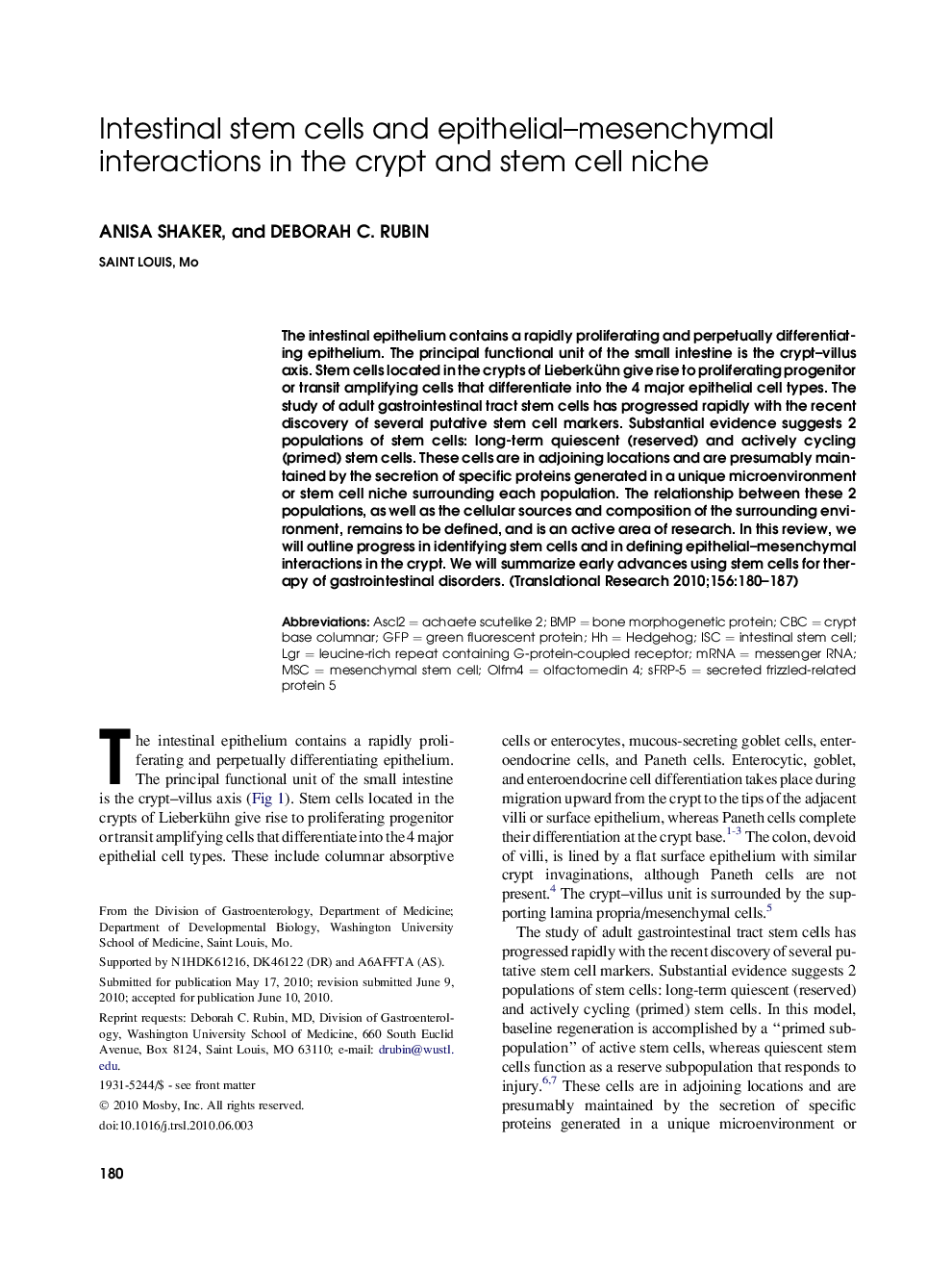| Article ID | Journal | Published Year | Pages | File Type |
|---|---|---|---|---|
| 3840838 | Translational Research | 2010 | 8 Pages |
The intestinal epithelium contains a rapidly proliferating and perpetually differentiating epithelium. The principal functional unit of the small intestine is the crypt–villus axis. Stem cells located in the crypts of Lieberkühn give rise to proliferating progenitor or transit amplifying cells that differentiate into the 4 major epithelial cell types. The study of adult gastrointestinal tract stem cells has progressed rapidly with the recent discovery of several putative stem cell markers. Substantial evidence suggests 2 populations of stem cells: long-term quiescent (reserved) and actively cycling (primed) stem cells. These cells are in adjoining locations and are presumably maintained by the secretion of specific proteins generated in a unique microenvironment or stem cell niche surrounding each population. The relationship between these 2 populations, as well as the cellular sources and composition of the surrounding environment, remains to be defined, and is an active area of research. In this review, we will outline progress in identifying stem cells and in defining epithelial–mesenchymal interactions in the crypt. We will summarize early advances using stem cells for therapy of gastrointestinal disorders.
